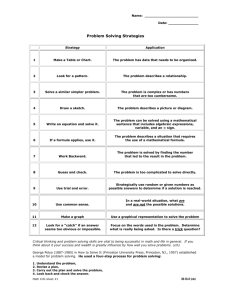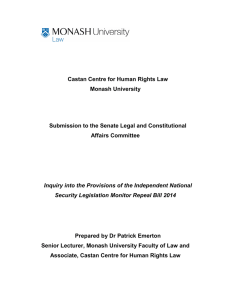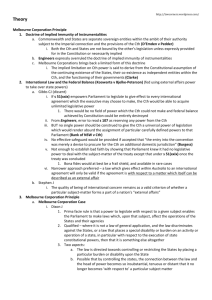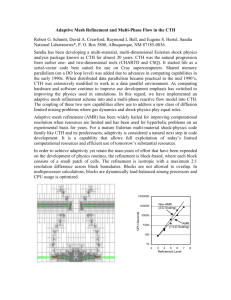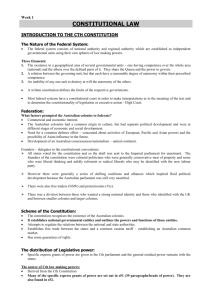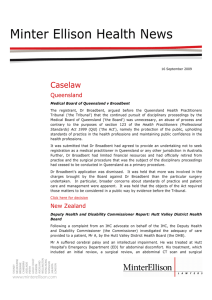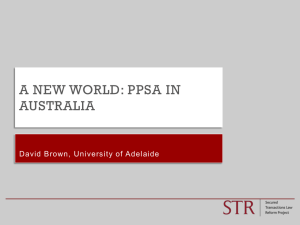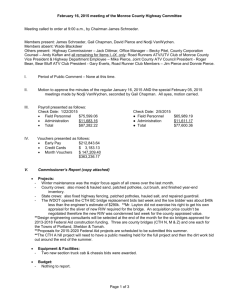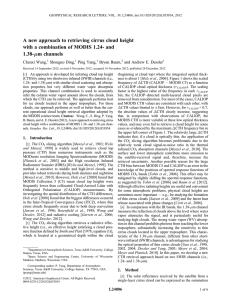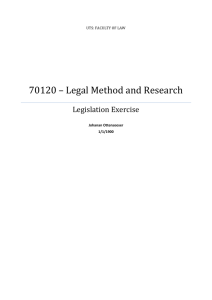Australian Constitutional Law
advertisement
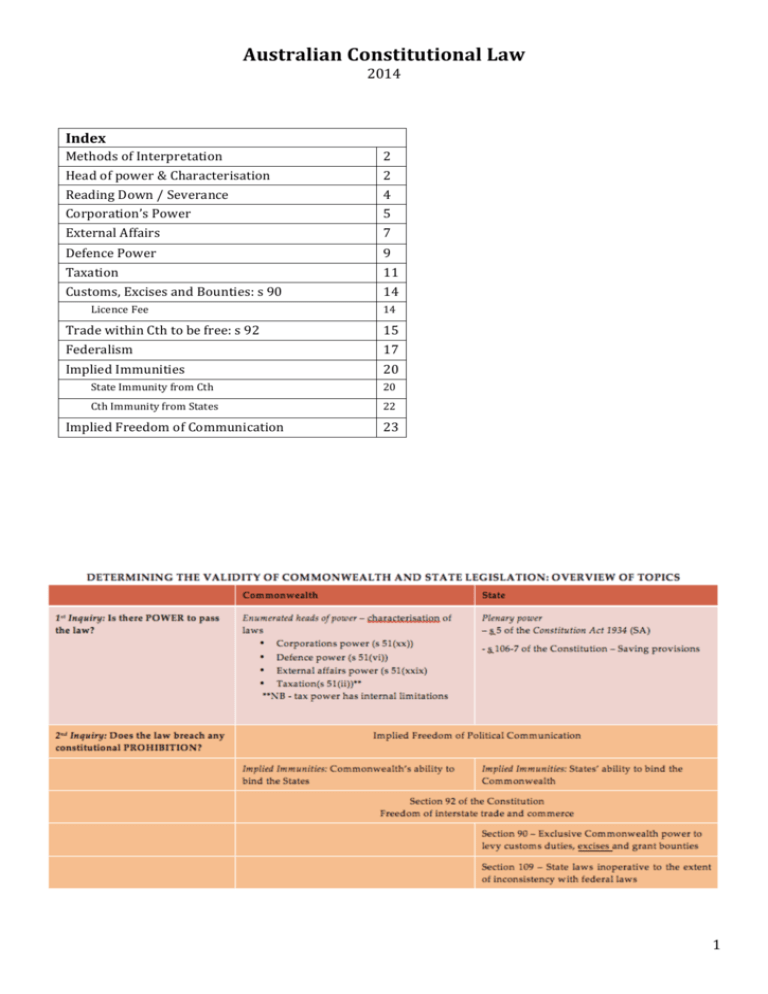
Australian Constitutional Law 2014 Index Methods of Interpretation 2 Head of power & Characterisation 2 Reading Down / Severance Corporation’s Power 4 5 External Affairs 7 Defence Power 9 Taxation 11 Customs, Excises and Bounties: s 90 Licence Fee 14 14 Trade within Cth to be free: s 92 15 Federalism 17 Implied Immunities Cth Immunity from States 20 20 22 Implied Freedom of Communication 23 State Immunity from Cth 1 Constitutional Interpretation Methods • Originalism • Intentionalism • Looks at original intent of the framers • Textual originalism • What reasonable persons believe text means (objective) • Literalism/textualism • Derive meaning from text alone • Legalism • look at ordinary meaning, historical context, informed by previous cases. Mix between originalism, literalism and precedent. • Incremental accommodation • s 80 Constition: promise of option to have jury. In beginning jury was ‘12 white men who held property’ Brownley v Queen HC had to decide if definition had changed. Decided core definition was ‘12 of your peers’ • Purposive/progressive interpretation • It progresses. S 61 vi government powers didn’t include airforce because it didn’t exist, had to change. • Realism • Practical necessity Examples of Interpretative Methods • Marriage interpretation o Progressive: societal values have changed o Originalist: Doesn’t extend to same sex • Treaty implementation o Realism: Murphy J in Koowarta v BjelkePetersen: Parliament needs power to make laws implementing treaty obligations regardless of subject matter, or nation would become ‘international cripple’. o Intentionalism: In 1901, covered piracy and sea laws. Founders didn’t know it could extend, but it has. Interpreting Heads of Power & Characterisation Importance of Federalism to Constitution - Division of legislative power - Division of tax power – Cth and State tax powers - Regulation of interstate trade - Inconsistencies between Cth and State laws - State immunity from Cth laws - Cth immunity from State laws Commonwealth Parliament’s Powers • Sections 51, 52, 122 For example: 51 The Parliament shall, subject to this Constitution, have power to make laws for the peace, order, and good government of the Commonwealth with respect to: • (xix) naturalization and aliens Determine Validity of Cth & State Legislation (Follow flow chart on seminar sheet) 0. Two-­‐step Process • Interpret the head of power • What do the sections mean? • Characterise the law • Is the law with respect to the head of power as defined? Looking for a connection. Connect law with head of power. 1. Interpret Head of Power General Method • Legalism as the guiding interpretive method: Isaacs J in Engineers o Ordinary meaning o Informed by CL and context o Take a broad view – able to adapt. • May be progressive: O’Connor J in Jumbunna 2 Characterise the Law • McHugh J in Re Dingjan: ‘First, the character of the law must be determined. That is, done by reference to the rights, powers, liabilities, duties and privileges that it creates. Secondly, a judgment must be made as to whether the law as so characterised so operates that it can be said to be connected to a head of power conferred by s 51.’ Section by section • Multiple characters are ok: Fontana 2.1 Character of the law • Types of Powers: o Subject-matter (things): § e.g. aliens, tax, everything except: defence, treaty implementation aspect 2

